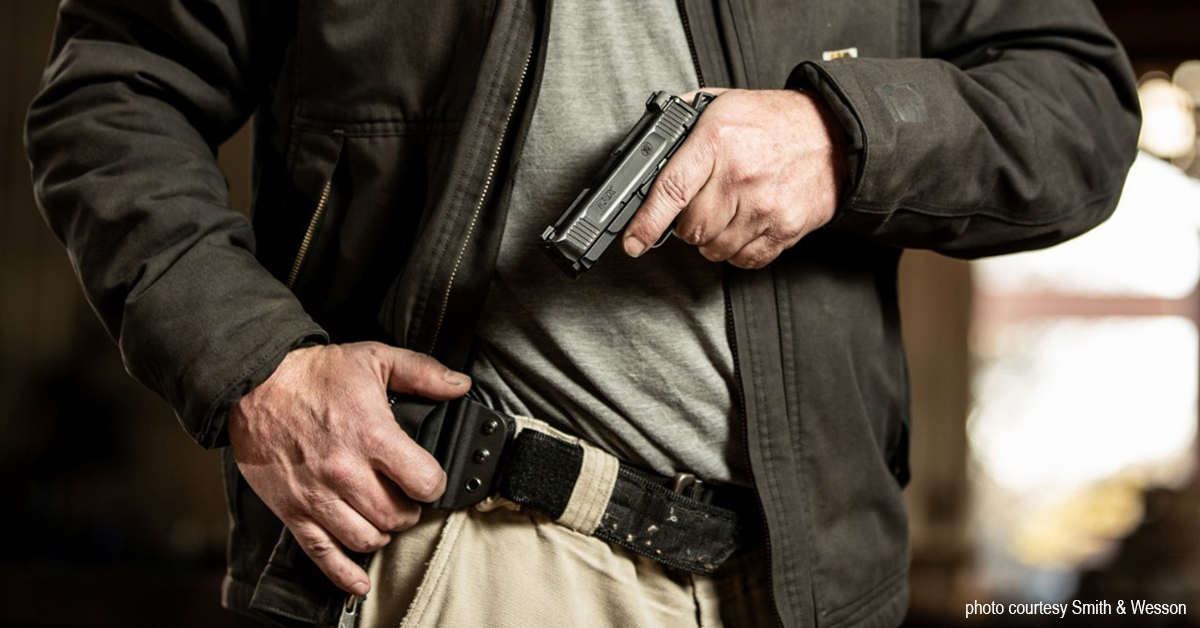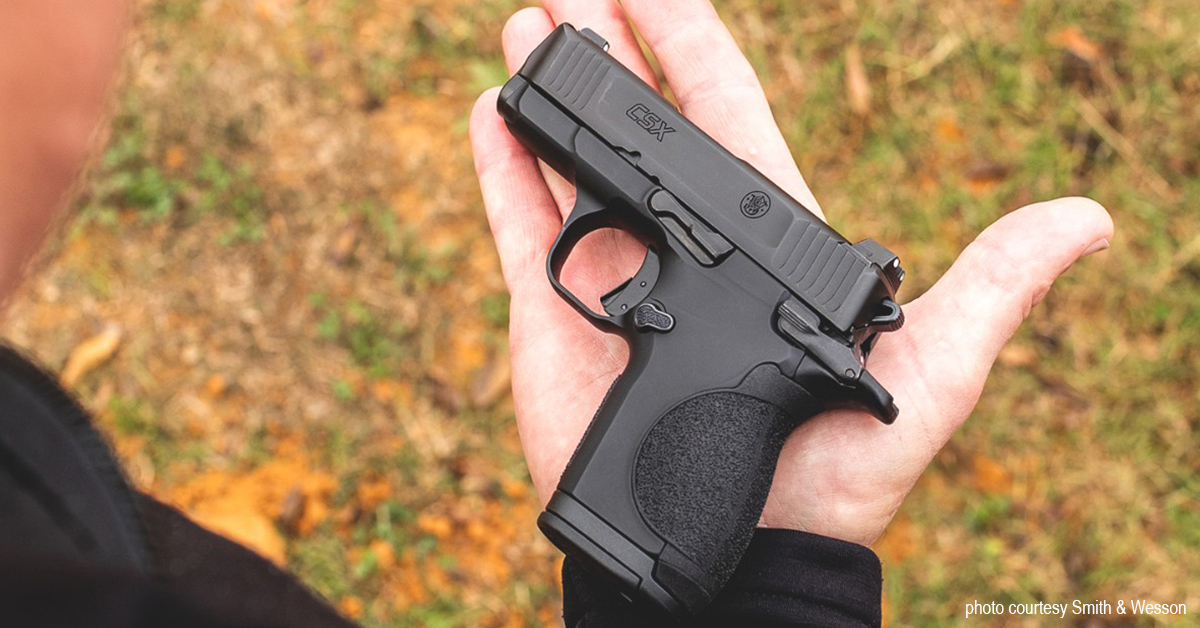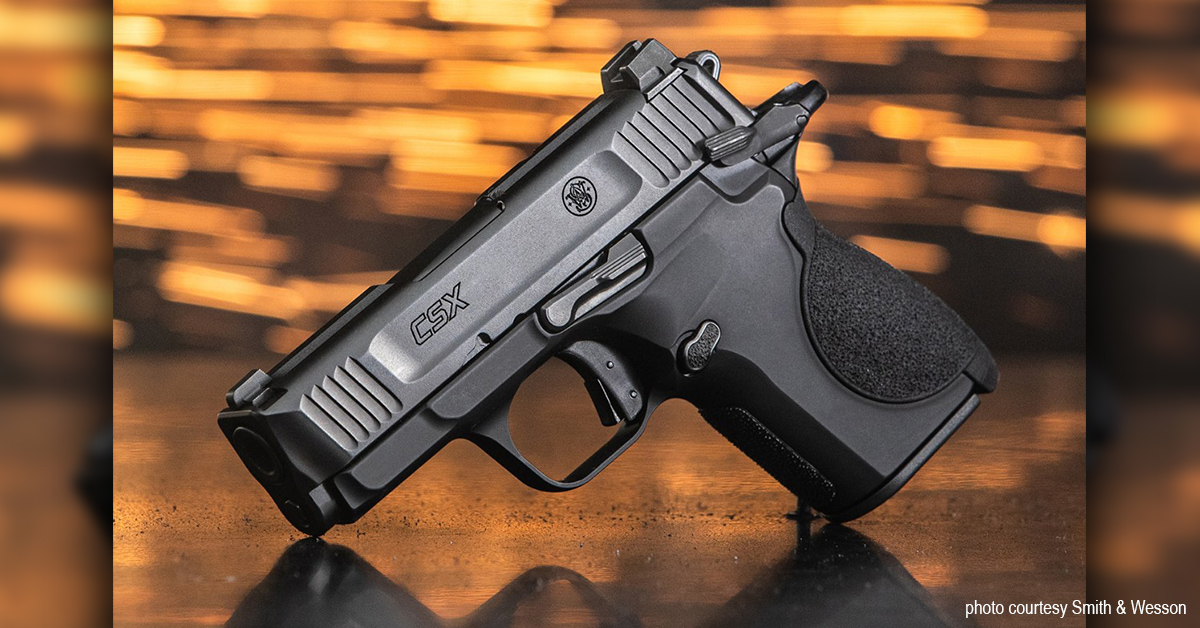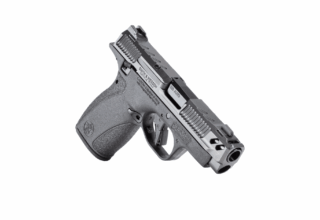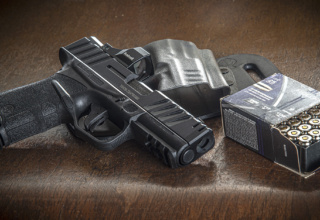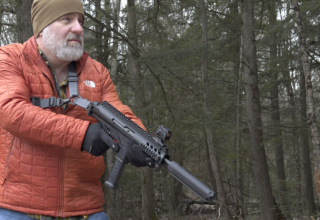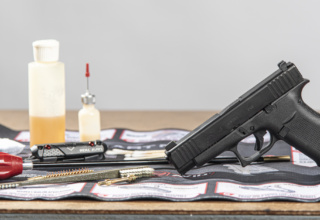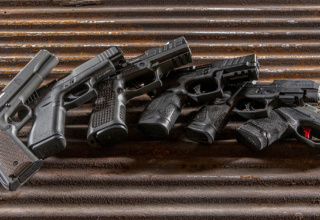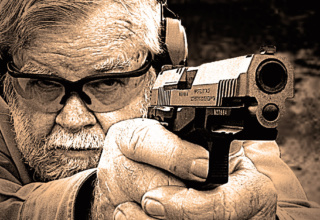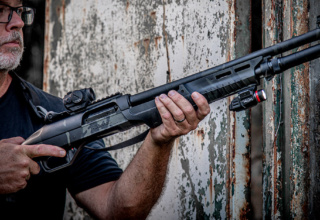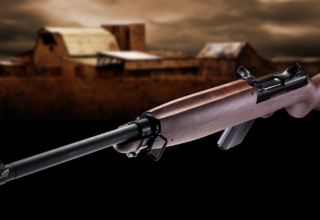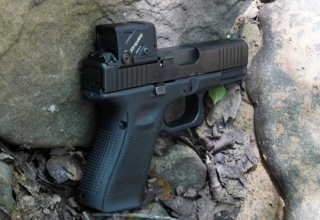A modern take on old-school metal and hammer
by Robb Manning
S&W flexed some old-school muscle at the 2022 SHOT Show when they introduced the new CSX micro-compact pistol. It’s not every day a major gun manufacturer introduces a new micro-compact carry gun that’s not striker-fired with a polymer frame. But that’s exactly what S&W did with the metal-framed, single-action, hammer-fired CSX. Not only that, but it looks great.
The CSX generated a lot of buzz when it was released, and it sure caught my eye. I couldn’t wait to get my hands on one. I was intrigued by it being all metal, and did I mention it looks sexy? Once I finally got one and picked it up, the first thought I had was that it felt very light — I was expecting it to be heavier considering that it’s all-metal. In fact, it’s about an ounce lighter than the original Shield and only about an ounce heavier than the Shield 2.0, mostly because of the aluminum alloy frame.
The Frame
The frame is constructed of aluminum alloy with a textured polymer front strap and interchangeable textured polymer back straps. One backstrap has a palm swell grip, the other is just the backstrap (a grip removal tool is included). The aluminum alloy frame has a groove machined into it for the palm swell grip, so with the smaller backstrap installed, the groove is visible, giving the gun an “unfinished” look. However, with the palm swell grip installed, the CSX has an aesthetic that’s almost like a work of art. The fine, rounded lines and smooth edges give it a grace that one could get lost in.
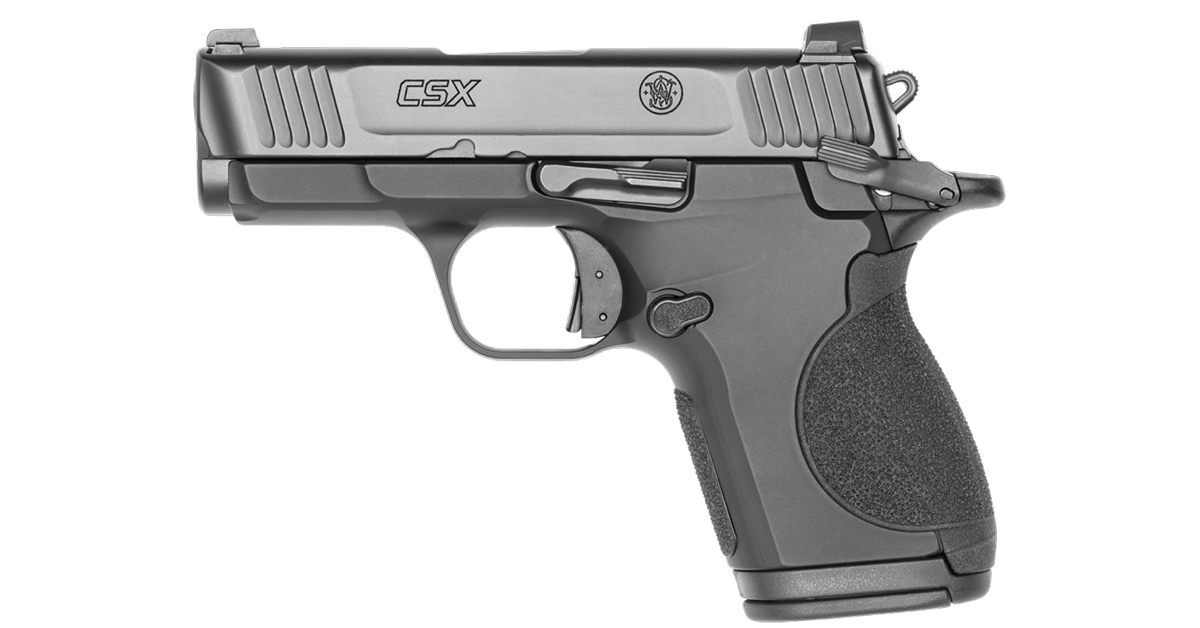
The CSX sports a beavertail, which is important for a hammer-fired gun in preventing hammer bite and/or slide bite. It takes on even more importance with today’s modern practice of attaining as high of a grip as possible. The trigger guard is undercut to facilitate a high grip as well.
Another noticeable feature — or lack thereof — is the absence of an accessory rail on the dustcover. An accessory rail is an invitation to mount accessories, which, on a carry gun, can snag when drawn from the holster. Not only that, but it isn’t logical to go out of your way to buy a micro-compact carry gun and then make it larger and clunky with accessories. I’m happy to see S&W didn’t include one in the design of the CSX.
The Slide
The slide is stainless steel with an Armornite finish. The top of the slide has serrations running lengthwise to cut down on glare and to help lead the eye to the front sight when acquiring a target. A loaded chamber indicator hole straddles where the slide meets the chamber hood.
The ejection port is chamfered to prevent snags when drawing from a holster and features a large, heavy-duty extractor for reliable case extraction from the chamber.
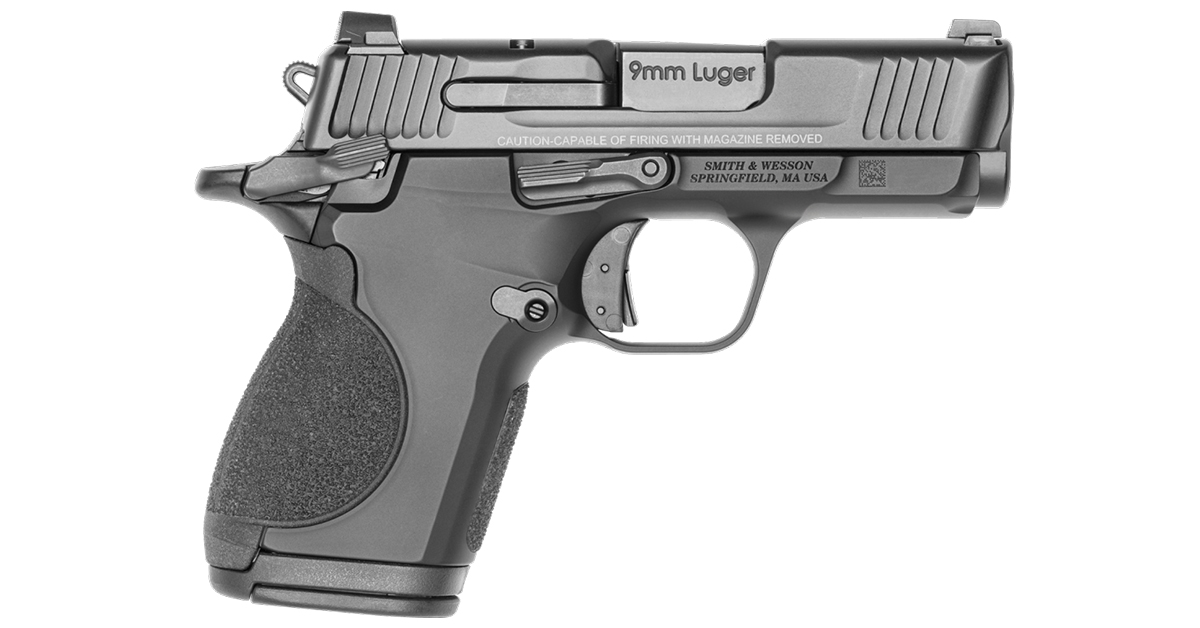
Slide serrations are located rear and front. They remind me of the scales on a snake or fish — rub them one way and it’s smooth as silk, but go the other way and they catch on your hand. The CSX slide serrations are smooth when being drawn from a holster, yet when pulling the slide, they feel aggressive and are easy to grab. To top it off, an EZ-tab integrated into the rear of the slide makes it even easier to pull.
The sights are white 3-dot and made of metal. Both front and rear sights have serrations to reduce glare. The slide is dovetailed to accommodate both the front and rear sights, so if you don’t like the sights it ships with, you can easily change them.
Overall, the fit and finish of the CSX is impeccable. I saw no machining marks, even on the inside where most people don’t look. All of the edges are beveled, and I couldn’t find a sharp edge on the gun.
Controls
The controls are low profile, but mostly easy to manipulate. I have large hands, and the thumb safety was a little difficult to nudge up with the side of my thumb. I tend to push in too hard, and on occasion, the safety gets hung-up on the bottom edge of the slide and won’t engage. Flipping it from safe to fire, though, is easy. It’s a bit like an assisted opening knife — nudge the safety down and it will snap into the fire position.

The magazine release sports the same texture as the grips, and it’s a nice touch. It comes with two magazine release buttons — one for right-hand shooters and one for left-hand shooters. The one for right-handed shooters is installed at the factory.
The skeletonized hammer is partially recessed into the slide and only about half of it is exposed. The helps prevent it from snagging when drawn from alternative carry devices, such as bags, pockets, packs, et cetera. It also means that it can be hard to cock with a thumb.
The trigger looks 1911-ish, but it’s not. The 1911 trigger is designed so that it pulls straight to the rear, but most triggers are hinged at the top and swing like a pendulum. The CSX trigger is hinged like most triggers, it just looks like a 1911 trigger. It has a trigger safety built into it, and it’s different than any of the other ones I’ve seen. This one has a flat face and is the same width as the trigger.
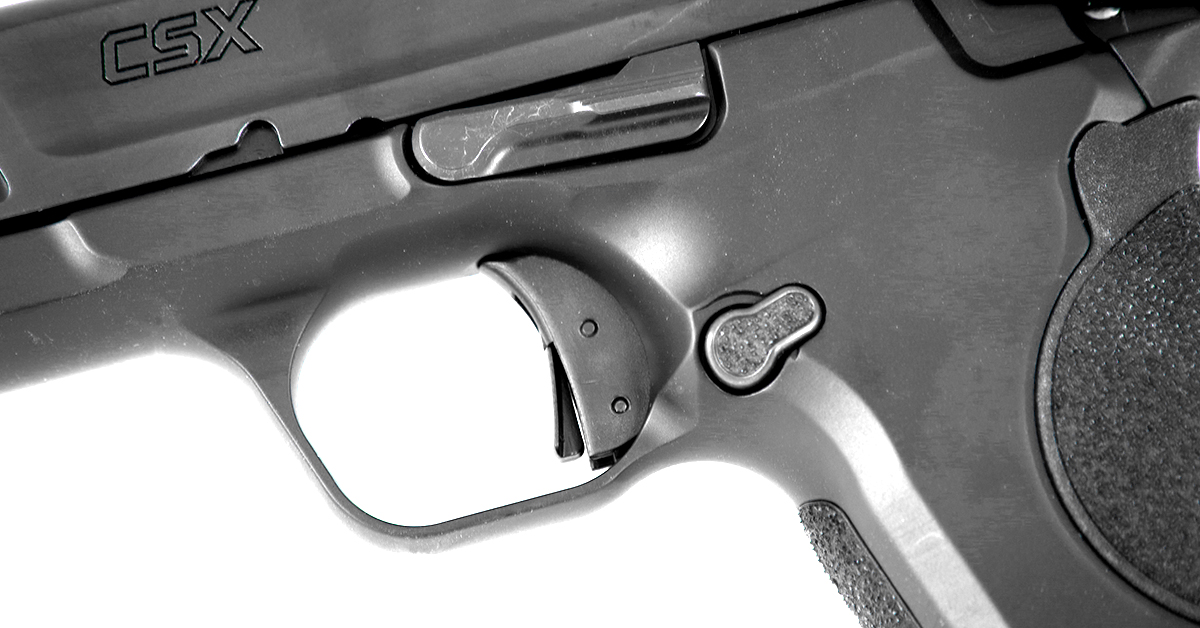
On the subject of safeties, there are three: manual thumb safety, trigger safety, and an internal firing pin block. It should also be noted that it will fire without a magazine inserted.
Operation
The CSX is single-action, which means the hammer must be cocked in order for the gun to be fired. It can be carried with the hammer cocked and the safety lever in the safe position, like the 1911. Unlike the 1911, it can also be carried with the hammer forward (un-cocked) and the safety lever in the safe position. In this condition, the hammer can then be cocked while leaving the safety engaged.
When training youth and new shooters, it’s a huge positive that the CSX can be loaded and a round chambered with the safety engaged the whole time. Conversely, it can also be unloaded and the round removed from the chamber with the safety engaged. The 1911 requires the safety lever to be moved to fire to manipulate the slide. This is something that has always made me uneasy when training new shooters and why I avoided the 1911 to do so.
The only time the CSX needs to be taken off safe to change the condition is if the shooter wants to de-cock the hammer without removing the round from the chamber. This is accomplished like a 1911: taking it off of safe, holding the hammer with the thumb, pulling the trigger, and easing the hammer forward.

One detail that Smith & Wesson left out is a red marking or some sort of indication that the thumb safety is not on safe. It doesn’t sound like a huge deal but considering that some handguns have a thumb safety with fire and safe in the opposite positions to the CSX, it could pose a safety issue for new shooters. Oddly enough, for left-hand shooters, the right side is marked with a small “F” that is kind of hidden.
One thing that I really like about the CSX is that even though it’s a hammer-fired handgun, it has a low bore axis. This means that when you have a proper grip, the bore of the gun is close to the web of your hand. A low bore axis helps to mitigate muzzle flip. Most hammer-fired handguns have a higher bore axis than do striker-fired handguns. As a comparison, the hammer-fired handguns I’ve measured have, at a minimum, a one-inch-high bore axis. The 1911 is around 1.2 inches high, and probably the highest I’ve measured is the Beretta 92/M9 at 1.3 inch. The CSX bore axis is about 0.78 inch high, which is where GLOCKs and most striker-fired handguns are.
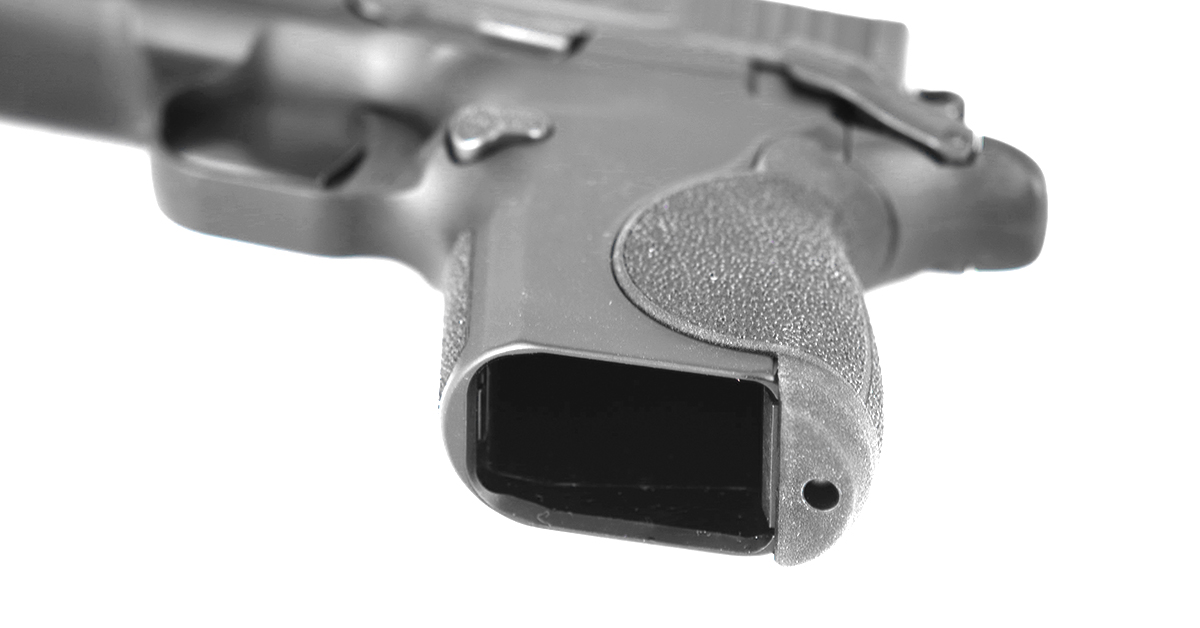
The higher bore axis stems from having a taller slide. A taller slide means that the sights are higher above the grip. Handguns with a low bore axis like the CSX have sights closer to the shooter’s grip. It’s more intuitive to raise your hand to eye level, so having the gun sights closer to your grip makes for faster sight acquisition on target. Think about when you point your index finger at a small object in the distance, you bring it up to your eye level. This might not sound like a big deal, because training can overcome pretty much anything (those that grew up with a 1911 or M9 and continue to train with them are used to the high sights), but it comes into play if you’re used to striker-fired handguns. The transition to the CSX is pretty easy.
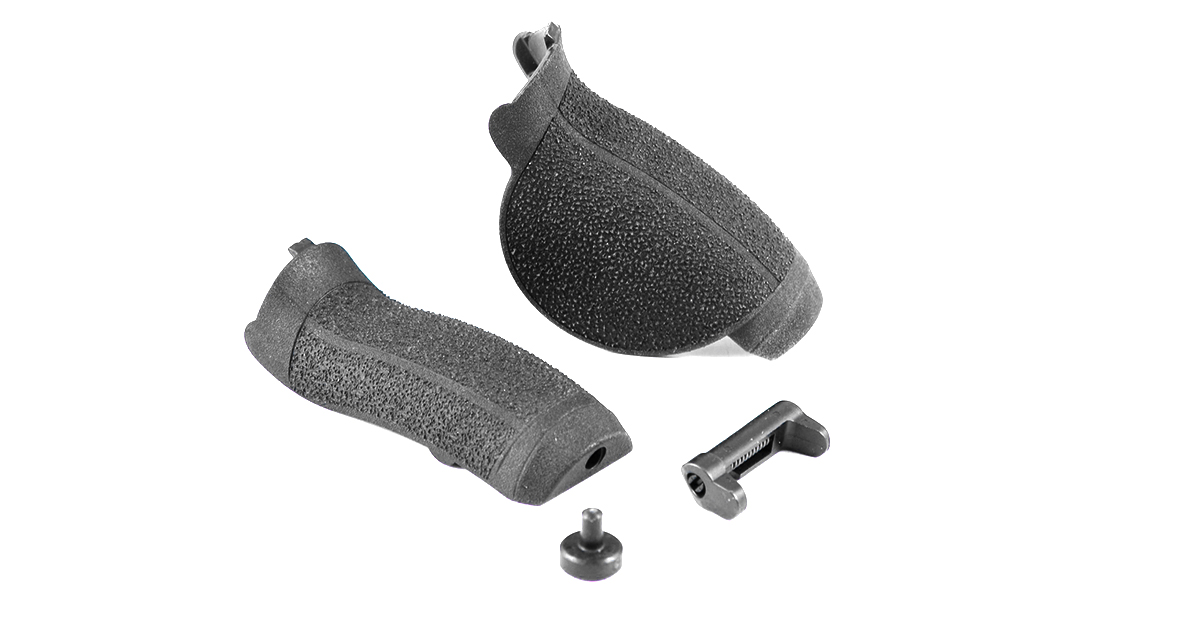
The trigger pull averaged 4.75 pounds out of five pulls using a Timney Trigger Tension Scale. There’s not much take up — only about a quarter-inch until it hits the wall, and not even a quarter-inch after it breaks. It’s a good trigger, not gritty, and it has a clean break.
The magazine capacity is impressive given the size of the CSX. The flush fit magazine holds 10 rounds, equal to that of the SIG P365, and more than the seven rounds that the GLOCK G43 holds. The extended magazine is only a scant 0.27 inches longer, but S&W engineers Houdini’ed two more rounds into it for a total of 12.
Many comments I’ve heard and read about the CSX keep comparing it to the 1911, and using phrases such as, “like other micro-1911s…” Though it may share a few vague similarities — and I’ve mentioned a few here — it’s nothing like a micro-1911, and that was not Smith & Wesson’s intent. They make 1911s, and I think if they wanted a micro-1911, they would have just made one. It would have been far simpler. But no, they designed the CSX to be different from other offerings on the market, including 1911s.
Range Time
The CSX was comfortable to shoot and quite controllable. It’s been awhile since I’ve fired a metal frame micro-compact, so I wasn’t sure what to expect, yet it handles recoil well. There isn’t a lot of muzzle flip, which I discussed before, so follow-up shots were quick. I enjoyed shooting it and wouldn’t have a problem at all spending a whole afternoon at the range training with it. Unfortunately, ammo is still running short in my neck of the woods, and the little that has started filling shelves comes at a steep price.
I did put 250 rounds through it and had no malfunctions. Reliability has never been an issue with Smith & Wesson.
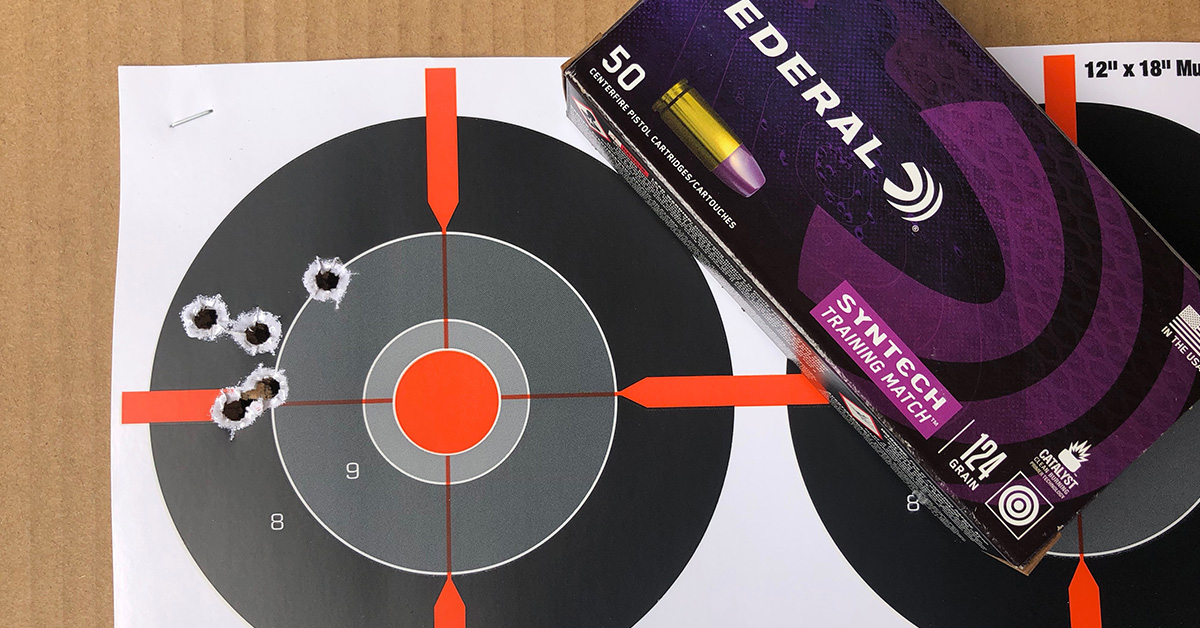
The trigger felt a little heavier than the 4.75 pounds it measured, but it was still a short, clean stroke with a crisp break. The trigger reset was okay — I’ve seen worse, but I’ve seen much better. It didn’t have a strong tactile and audible reset when I was firing it, and on several occasions during rapid fire I thought it felt like it reset, but when I pulled the trigger, it didn’t go bang. After this happened a couple of times, I realized that after the gun fires and I’m releasing the trigger, the trigger jumps to a stopping point and I could faintly hear the spring click. It feels and sounds like this is the trigger resetting, but this is not the reset point. The trigger must go a little further. I’m sure with more range time I’d get used to it.
As far as the trigger safety goes, it’s the best one I’ve used. Not that other manufacturer’s designs aren’t good, but I really like this one. When I was shooting it, I forgot that I was pressing a trigger safety. This probably sounds weird, but the design of the trigger safety is one of my favorite things about the CSX.
Accuracy testing wasn’t as thorough as I what I prefer, which is, at a minimum, the average of three 5-shot groups per load. I’m currently testing two 9mm handguns and just got done testing a third, so I’m having to spread out my scant supply of 9mm ammo. As a result, I only did one 5-shot group for each load. I could have done more groups with the bulk ammo that I have, but don’t have enough self-defense loads, so that wouldn’t really be a fair comparison.
With that said, I tested three loads from Federal, and one each from Black Hills and Wolf. The details are in the accompanying performance data sidebar. The CSX really liked the Federal Syntech 124 grain TSJ and Wolf 115 grain FMJ, which had 1.48-inch and 1.84-inch groups, respectively. I rarely ever have a gun that doesn’t like Wolf ammo, which I find surprising given its bargain price point. The Black Hills 115 grain FMJ grouped at 2.82 inches due to a “flyer” — the excuse of every gun writer — but if not for it, the group would have been the best of the day at 1.11 inches. The Federal American Eagle 70 grain Lead-Free Ball ammo was in the middle of the pack at 2.02 inches, and the Federal Tactical 124 grain Hydra Shok came in last at 3.18 inches. With more trigger time — and ammo — the groups would tighten up.
The only other issue I had, aside from the trigger reset, is I walked away with a tiny cut/abrasion on the web of my hand from slide bite. The beavertail prevented hammer bite, but it is a little narrow, and didn’t prevent slide bite. It was insignificant, and I didn’t even notice when it happened.
Disassembly
Disassembly is simple but will require a punch. Nope, the grip removal tool that’s included won’t work, and you’ll need something stronger than a wood-handle Q-tip.
First, remove the mag and make sure the chamber is empty. It can be disassembled with the thumb safety in either position. I prefer to cock the hammer to get it out of the way of the slide for the next step. On the right side of the pistol is the slide stop lever, and the pivot point is the takedown pin that you will need to push out. Next, align your punch with the pin while at the same time using your other hand to slowly move the slide back about a quarter-inch so the small notch on the left side is aligned with the pin of the slide stop — much like disassembling a 1911 — and press with the punch until the pin (left side slide stop) pops out. It took a lot of pressure the first time I disassembled it, but it took considerably less after that. The right-side slide stop does not come out and will stay attached to the frame. It can be removed, but since it covers a spring assembly, I’m not sure if it’s wise to do so unless you know what you’re doing.
From here, pull the slide off the front and remove the captive recoil spring and then the barrel. It’s done. Five parts. To reassemble, reverse the process. Disassembly of the CSX is a simple process, but I must confess, I’m not a fan of carry guns that require a tool to field strip. It’s fine for range guns, but not for a carry gun that I’m going to use daily.
Final Thoughts
I was intrigued by the CSX when I heard of its release, and I’m happy that I got the chance to test it. I always give kudos to companies who release guns to the market that are different than what everyone else is doing, and there’s not a lot of new 9mm sub-compact carry guns that are all-metal and hammer-fired. I really like what Smith & Wesson did here, and believe they hit a sweet spot with the CSX in an under-served genre of carry guns. They got the design features right, and it has excellent aesthetics.
No gun is perfectly suited to everyone’s taste because everyone is different, but for those looking for a hammer-fired, all-metal micro-compact carry gun, the Smith & Wesson CSX will have broad appeal.
Smith & Wesson CSX Specifications
- Caliber: 9mm
- Magazine Capacity: 10/12
- Action Type: single action
- Frame: aluminum alloy
- Slide: stainless steel w/Armornite finish; matte black
- Barrel: stainless steel w/Armornite finish
- Sights: metal; white 3-dot
- Grips: interchangeable backstraps
- Barrel Length: 3.1 in.
- Height: 4.5 in.
- Width: 1.16 in. (at widest part, palm swell)
- Overall Length: 6.1 in.
- Weight: 17.5 oz. (no magazine)
- Accessories: two magazines (10/12), two magazine releases (R/L)
- MSRP: $609
Performance Data
(ammo, accuracy, average velocity, extreme spread, standard deviation)
- Federal Syntech Training Match TSJ 124 gr., 1.48 in., 1093.02 fps, 48.22 fps, 18.95 fps
- Federal Tactical Hydra Shok 124 gr., 3.18 in.,1001.35 fps, 55.36 fps, 21.53 fps
- Wolf Military Classic FMJ 115 gr., 1.84 in., 1088.87 fps, 69.24 fps, 25.09 fps
- Black Hills FMJ 115 gr., 2.82 in., 1040.92 fps, 77.31 fps, 31.73 fps
- Federal American Eagle Lead Free Ball 70 gr., 2.01 in., 1524.61 fps, 100.74 fps, 42.24 fps
Accuracy is 5-shot groups at 12 yards from a rest. Velocity is a 5-shot average using a LabRadar. E.S. = Extreme Spread. S.D. = Standard Deviation.
- TESTED: Beretta PMXs 9mm Pistol - July 26, 2024
- The Correct Way to Clean a GLOCK - January 15, 2024
- Concealed Carry Guns: How Important is Ergonomics? - December 11, 2023

